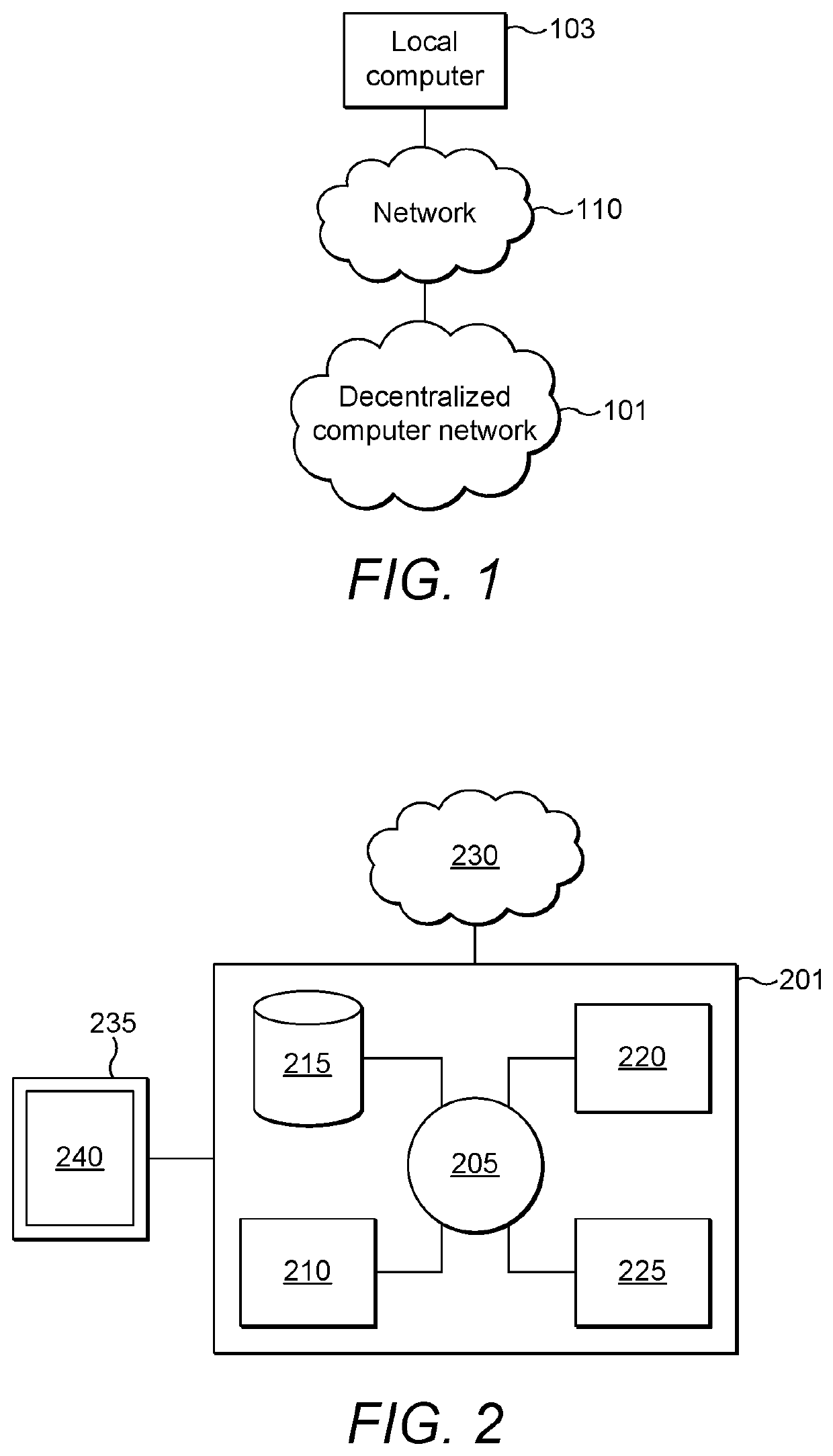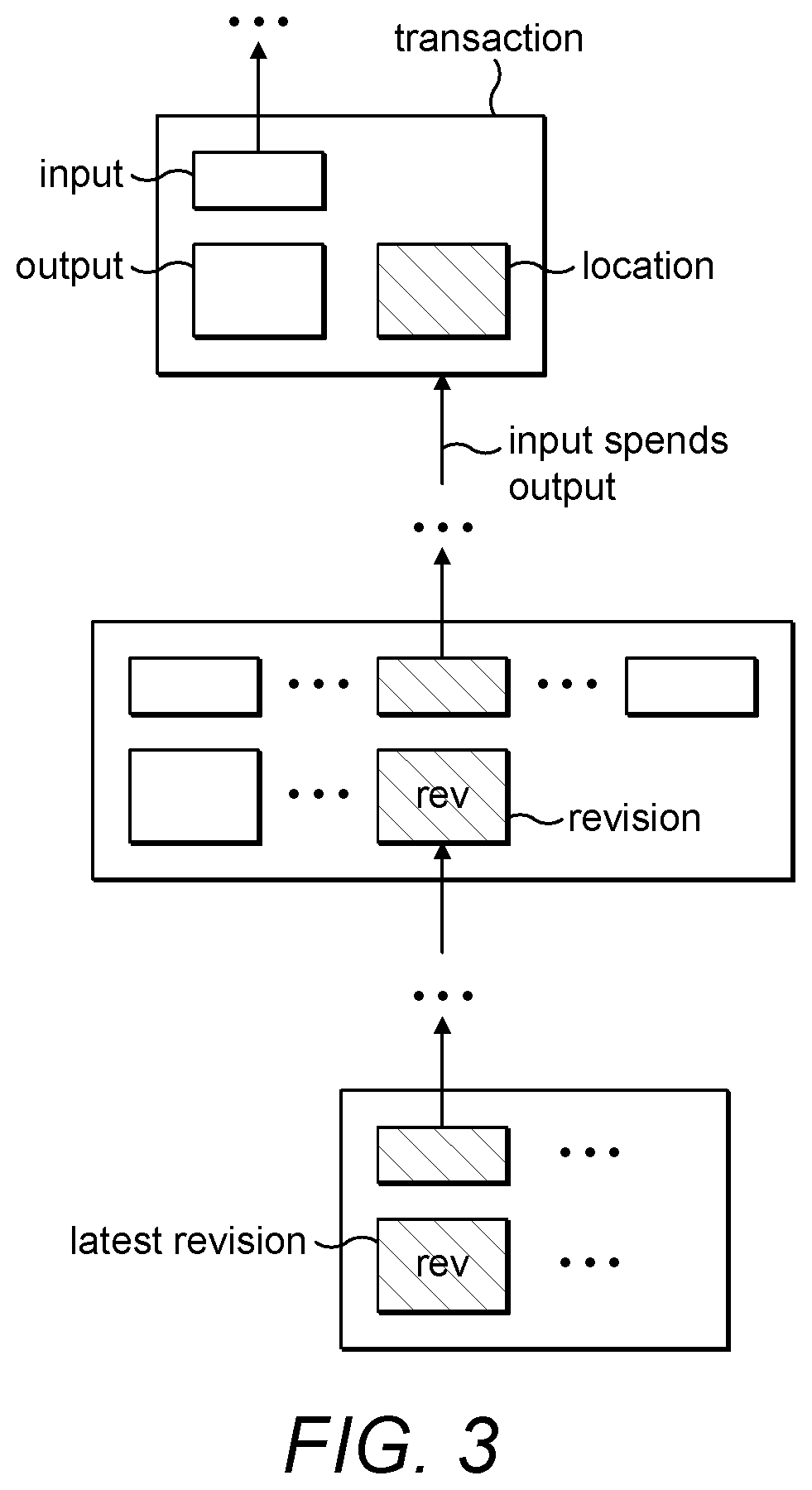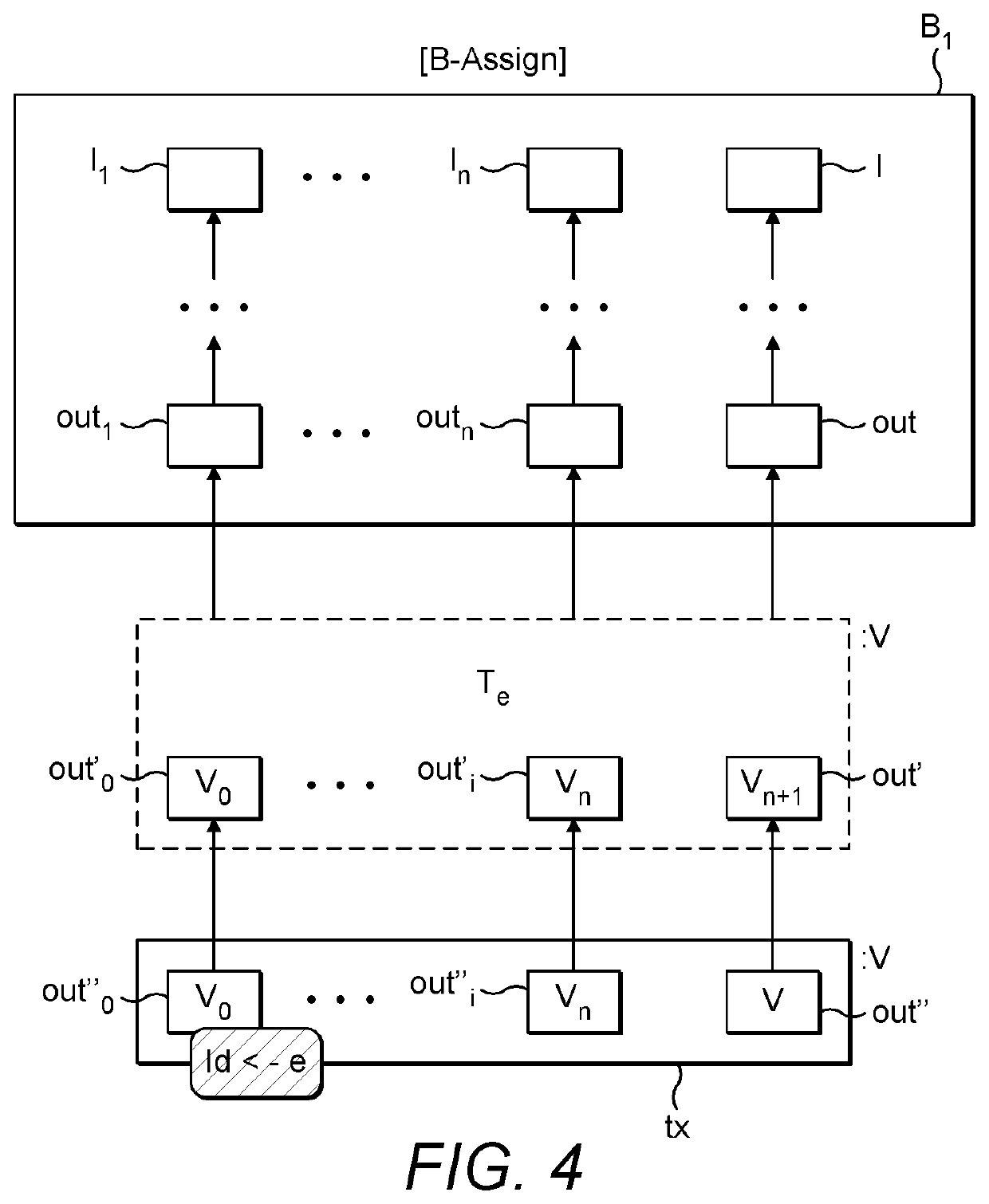Object Oriented Smart Contracts For UTXO-Based Blockchains
a smart contract and object-oriented technology, applied in the field of method storing and updating data structures in blockchains, can solve problems such as the entire network becoming unresponsive, the miner checking malicious output may be caught in a non-termination computation, and become susceptible to an attack
- Summary
- Abstract
- Description
- Claims
- Application Information
AI Technical Summary
Benefits of technology
Problems solved by technology
Method used
Image
Examples
examples
[0260]Following are several examples of the evaluation of BCool expressions.
[0261]Variable Definition and Assignment
Consider the expression e below consisting of two nested let expressions and an assignment.[0262]let x←1[0263]in let y←2[0264]in xθy
The evaluation is shown in FIG. 8. The first step is to evaluate the expression 1. This evaluation broadcasts no transactions and returns the value Int(1). Then an unspent b-locations lx is obtained and a transaction is a broadcast that spends lx into an output that stores the value Int(1). The first output of this transaction stores the expression e.
[0265]Then the expression e′=let y←2 in x←y is evaluated in an environment that maps identifier x to location lx. In this evaluation, the first step is to evaluate the expression 2, which returns the value Int(2). A fresh location ly is obtained from the current blockchain. Then a transaction is broadcast that stores e′ in its first output. This transaction spends lx because it is in the curre...
PUM
 Login to View More
Login to View More Abstract
Description
Claims
Application Information
 Login to View More
Login to View More - R&D
- Intellectual Property
- Life Sciences
- Materials
- Tech Scout
- Unparalleled Data Quality
- Higher Quality Content
- 60% Fewer Hallucinations
Browse by: Latest US Patents, China's latest patents, Technical Efficacy Thesaurus, Application Domain, Technology Topic, Popular Technical Reports.
© 2025 PatSnap. All rights reserved.Legal|Privacy policy|Modern Slavery Act Transparency Statement|Sitemap|About US| Contact US: help@patsnap.com



